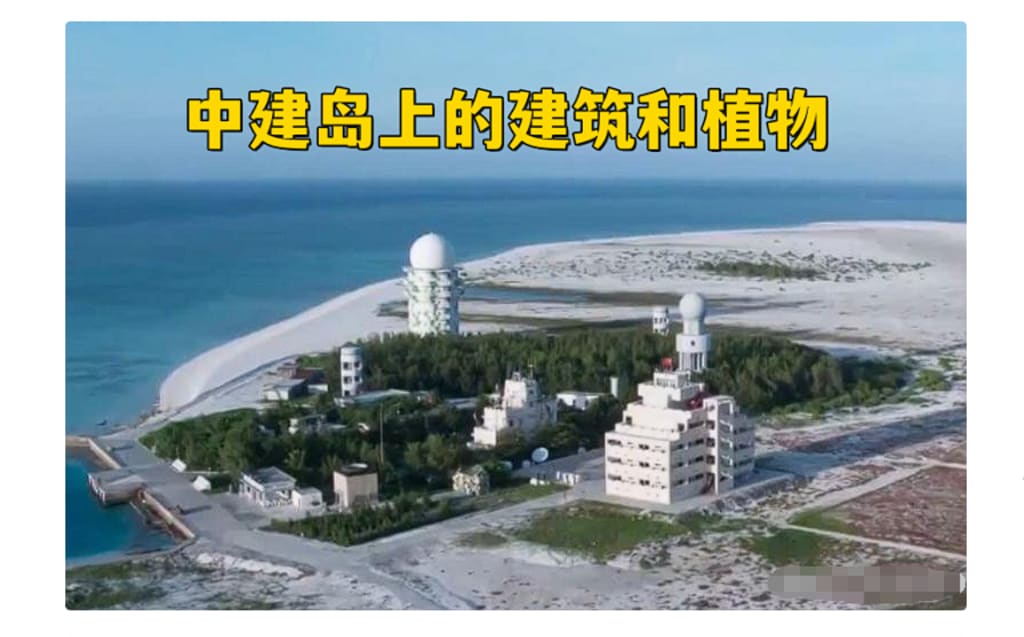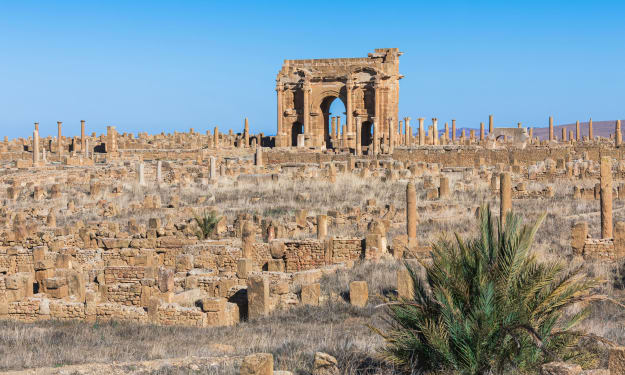China reclaims Zhongjian Island from the Vietnamese, what changes have occurred, and what will Zhongjian Island look like in 50 years?
ahong

Vietnam is a Southeast Asian country, bordering the South China Sea, with a long and narrow territory in an S-shape. It borders Guangxi and Yunnan in China and faces Hainan Island, the Xisha Islands, and the Nansha Islands across the sea. The longest north-south distance is about 1640 kilometers, the widest east-west distance is about 600 kilometers, and the narrowest point is only 50 kilometers. Among the islands in the South China Sea, the closest to the Vietnamese mainland is Zhongjian Island of the Xisha Islands, with a straight-line distance of 250 kilometers at sea, facing the waist of Vietnam, facing the old capital of Vietnam, Hue, and the military base of Da Nang, and is relatively close to the famous military base of Cam Ranh in southern Vietnam.
In the past few years, Vietnamese fishing boats and armed reconnaissance ships illegally fished or conducted military reconnaissance activities in the Xisha Islands of our country, passing through Zhongjian Island, and were forcibly driven away after being discovered by our law enforcement personnel. In recent years, the incidents of illegal fishing by Vietnam have greatly decreased, and the waters of the Xisha Islands have been relatively calm.
However, Zhongjian Island is the forefront of our country's maritime defense in the South China Sea and the gateway to the Xisha Islands. This status has never changed.
The area of Zhongjian Island is not large, with a reef area of about 7.5 square kilometers and an island area of only 1.5 square kilometers, which is the land area that can be reached at low tide. If there is a typhoon, high tide, or wave erosion, the land area of Zhongjian Island is only about 0.8 square kilometers.
Zhongjian Island is known as the "Gobi of the South China Sea." Before 1982, there was not a single tree on the whole island, and vegetation was scarce. Zhongjian Island is a gray sand island developed on the top of a coral platform reef, with the whole island mainly composed of coral sand and gravel, surrounded by sand dunes, with a residual lagoon in the center of the island. Due to the low-lying terrain, half of the land on the whole island will be submerged by seawater when encountering a typhoon, high tide, or wave erosion.
Zhongjian Island has been our country's inherent territory since ancient times, and the nearby waters are our country's traditional fishing grounds. Since the Qin and Han dynasties, fishermen from Guangdong, Guangxi, and Hainan in our country have been engaged in fishery production here and lived on the island in sheds.
I. General Ma Yuan pacified the "Second Zheng Rebellion," and sent ships passing through Zhongjian Island
In the 18th year of the Jianwu era of the Eastern Han Dynasty (42 AD), Emperor Guangwu of Han, Liu Xiu, ordered General Ma Yuan to pacify the "Second Zheng Rebellion" in Jiaozhi Prefecture (now Hanoi, Vietnam). At that time, Vietnam was under the jurisdiction of the Han Dynasty, with three prefectures established: Jiaozhi, Jiuzhen, and Rinan, with the southernmost boundary reaching the central part of Vietnam, Hue.
When General Ma Yuan's troops were stationed in Longmen Town of Leizhou, they led more than 2,000 large and small tower ships and more than 20,000 soldiers, advancing on land and sea, cutting through thorns and brambles, and advancing thousands of kilometers from the sea and land to Jiaozhi Prefecture, entering Hanoi, beheading thousands, and surrendering tens of thousands of enemies. In the end, the Zheng sisters were executed on the spot, and their heads were sent to Luoyang to pacify the "Second Zheng Rebellion."
When General Ma Yuan pacified the "Second Zheng Rebellion," he took a detour approach, advancing on land and landing on the coast of central Vietnam from the sea to implement a rear encirclement. More than 2,000 large and small warships set out from the Leizhou Peninsula, the west coast of Hainan Island, and even from Yazhou, now Sanya, passing through Zhongjian Island of the Xisha Islands, entering central Vietnam, and cutting off support from the central and southern parts of Vietnam. Therefore, to this day, the story of Ma Yuan's rebellion is still circulated in Danzhou City, Dongfang City, and Sanya City on Hainan Island, and the Fubow Temple and Fubow Temple left by General Ma Yuan are still worshipped by people.
It can be seen that at that time, Zhongjian Island, along with the Xisha Islands, was already our country's inherent territory.
II. Our country's island defenders once temporarily lived on an abandoned American cargo ship that ran aground
Due to the lack of vegetation and harsh natural conditions on Zhongjian Island, except for our country's fishermen occasionally living on the island temporarily and engaging in fishery production, there has never been a fixed personnel stationed throughout the dynasties.
During World War II, Zhongjian Island was occupied by the Japanese army. After the end of World War II, in 1946, our country sent warships to receive Zhongjian Island and named it after the Zhongjian warship. Before that, Zhongjian Island was called Luo Island or Banlu Zhi. In the 1950s, the South Vietnam sent warships to invade our Xisha Islands and occupied the Coral Island. In 1974, our country sent warships to defeat the South Vietnamese warships, reclaiming Coral Island, Jinyin Island, Ganquan Island, and other reefs, driving out the South Vietnamese forces from the Xisha Islands, and bringing the Xisha Islands back to the embrace of the motherland.
In 1975, our country began to station troops on Zhongjian Island.
Because Zhongjian Island is a white sandbank, the geological composition of the island is mainly coral sand and shells, historically known as the barren island, fire island, wind island, and sand island, coupled with high temperature and dryness, lack of fresh water, making it difficult for people to live on the island.
In 1975, our garrison platoon entered Zhongjian Island. The tents they set up were blown away by the strong wind, and the living utensils were filled with sand, making life very difficult. When the soldiers were looking for other ways, they suddenly found a stranded 10,000-ton cargo ship not far from the west side of the island, suitable for temporary residence. Half of the tilted ship was submerged in the sea, and the other half was exposed above the sea surface. The dark brown ship was covered with rust, and although the ship was dilapidated, the hull was relatively intact.
This is an American military transport ship named "Sergeant Jack J. Pendleton," with a full load displacement of 30,000 tons. In 1972, during the Vietnam War, the United States transported military supplies for the South Vietnamese government on the way back. This ship encountered wind and waves on Zhongjian Island of our country and ran aground. The U.S. military tried many ways but could not move this huge transport ship, and finally had to dismantle the valuable equipment on the ship and abandon the hull.
Our garrison platoon boarded this stranded large cargo ship and found that although the large cargo ship had been ravaged by wind and rain for several years, the cargo holds and cabins inside the ship were still intact and suitable for living. Our garrison platoon then transported backpacks, guns, ammunition, daily necessities, food, and fresh water from the sandbank to the cargo ship and temporarily lived on the ship, waiting for the barracks to be built on Zhongjian Island. During the day, the soldiers patrolled the island on foot, and at night, they were on duty on the ship. This lasted for three years, and in 1978, we finally built a three-story barracks on Zhongjian Island, built a wall outside the barracks, and changed the history of Zhongjian Island without barracks.
III. In 1979, General Chen Weiwen commanded the defense battle of Zhongjian Island and achieved a great victory
In February 1979, shortly after the garrison platoon moved into the barracks on Zhongjian Island, the self-defense counterattack war broke out. As the front line closest to the Vietnamese mainland, Zhongjian Island was responsible for maritime defense. According to the order of the Xisha Islands Water Police District, a front-line temporary command post was established on Zhongjian Island, and Chen Weiwen, who was then the head of the Navigation Protection Training Department of the Xisha Islands Water Police District Command (Deputy Regiment Level), was appointed as the highest commander to deal with possible Vietnamese infringement on Zhongjian Island.
On the morning of April 10, 1979, the Logistics Department of the Fifth Military Region of Vietnam did send three armed ships with a total of 24 people, carrying rocket launchers, machine guns, and other weapons to invade our Zhongjian Island. When the Vietnamese armed ships were 8 nautical miles away from Zhongjian Island, they were discovered by our radar soldiers, and Chen Weiwen ordered all officers and soldiers to enter a first-level combat readiness. When the Vietnamese ships approached Zhongjian Island to 2 kilometers, the soldiers could see the Vietnamese soldiers on the armed ships and the machine guns on the ships, confirming that they wereVietnamese armed ships, and Chen Weiwen immediately ordered to intercept and fight back by boat.
At that time, there were no warships on Zhongjian Island, only a dredger for construction, a transport ship, and a landing craft. Chen Weiwen divided the three ships into two formations, and the soldiers boarded the ships to chase the three Vietnamese armed ships separately. Seeing that our side was well-prepared, the Vietnamese army panicked and fled without firing a single shot.
The entire battle was quick and fast. Our army used the advantage of the fast landing craft to stop the fleeing Vietnamese ships. The soldiers, with a fearless spirit and full combat enthusiasm, jumped onto the Vietnamese armed ships, controlled the Vietnamese soldiers, and confiscated their weapons. The Vietnamese soldiers were intimidated by the strong momentum of the soldiers and did not resist at all, choosing to surrender.
The entire battle, except for our army's warning shots at sea, the Vietnamese army did not fire a single shot or shell. After an hour of intense pursuit and encirclement, the three armed ships of the Vietnamese army were all captured by our army, and 24 soldiers from the Fifth Military Region of Vietnam were captured, six 40-rocket launchers, five machine guns, twelve submachine guns, thousands of various bullets, and two walkie-talkies were seized.
Later, the entire garrison team of Zhongjian Island was awarded the second-class collective merit, and General Chen Weiwen was personally awarded the second-class individual merit. This was one of the six naval battles he commanded in his life. The Chiwei Shoal Sea Battle in 1988 was also commanded by him, and he achieved a great victory by killing and injuring more than 400 enemies with only one person lightly injured.
IV. In 1982, the first coconut tree was planted on Zhongjian Island, and the first coconut was harvested in 2002
After the defense battle of Zhongjian Island in 1979, the garrison soldiers on the island began the construction of Zhongjian Island, aiming to transform it from the past barren island, sand island, wind island, and fire island into a sea oasis and a new city on the sea, turning Zhongjian Island into a sea garden.
There is no soil on the island, only coral sand and gravel. Without soil, there is no vegetation. The garrison soldiers decided to use various opportunities to return to the mainland for family visits, study, or vacations to transport soil and fertilizer from the mainland, and carefully cultivate tropical plants. The soil includes black soil from Northeast China, loess from the Loess Plateau, purple soil from the Sichuan Basin, and red soil from the Yunnan-Guizhou Plateau. Eventually, a 12,000 square meter artificial soil was opened around the barracks, which later reached 55,000 square meters, and tropical plants such as coconut trees, pine trees, and wind-resistant Tong trees were planted. The first coconut tree was planted in 1982.
After 50 years of construction, the artificial soil layer on Zhongjian Island has reached more than one meter thick. Although there are typhoons, high tides, and wave erosion, the 0.2 square kilometers of land centered on the barracks has never been submerged by seawater. There are more than 500 surviving coconut trees on the island, 5,536 pine trees, 1,423 Yangjiao trees, and a large area of climbing vines covering the sandbank. The height of the coconut trees has reached more than 20 meters, and the first coconut was harvested on Zhongjian Island in 2002, becoming a treasure of the town.
Inside and outside the barracks on Zhongjian Island, around the wharf, and along both sides of the road, especially the connected pine forest on the north side of the barracks, it is a scene full of greenery and vitality. It is not an exaggeration to say that this place is a green island.
V. The Zhongjian South Basin is an important oil and gas-rich area in our country
In addition to being the forefront of our country's maritime defense and the gateway to the west of the Xisha Islands, Zhongjian Island is also an oil and gas-rich area in the South China Sea of our country.
The Zhongjian South Basin is located in the sea area south of Zhongjian Island, with a basin area of 86,814 square kilometers. The edge of the basin is the closest to Zhongjian Island at 20 kilometers and the closest to the central coast of Vietnam at 91 kilometers, with water depths ranging from 50 to 3,800 meters. The oil reserves of the Zhongjian South Basin are 297.1 million tons, and the exploitable oil volume is 58.1 million tons. Among them, the area for bidding is 15,859 square kilometers, and the exploitable oil reserves for bidding are 34.8 million tons. The Zhongjian South Basin is a treasure trove of oil and gas resources in our country.
In 2014, the China National Offshore Oil Corporation (CNOOC) 981 drilling platform conducted drilling operations in the Zhongjian South Basin and was subject to all kinds of obstructions from Vietnam. Our side set a 3-nautical-mile radius no-entry zone for foreign ships around the 981 drilling platform. Why set a 3-nautical-mile radius no-entry zone? Mainly to prevent Vietnamese frogmen from sabotage, because 3 nautical miles is the limit of frogmen swimming. Frogmen carrying fishing nets, ropes, or explosive packages and other tools for committing crimes have not yet swum to the drilling platform, and their physical strength is exhausted. If frogmen use underwater propulsion devices to approach our drilling platform, our drilling platform is generally equipped with anti-frogman weapons. Before the frogmen can swim close, they will be eliminated in the seawater. Vietnam's interference plan ultimately failed.
VI. After 50 years, Zhongjian Island has changed from a sandbank to an oasis, and the entire island has undergone earth-shaking new changes
From the latest satellite photos, we can see that Zhongjian Island has a harbor that can berth thousand-ton ships, a helicopter field that can take off and land military or civilian helicopters, the surrounding area of the camp is shaded by green trees, chickens and ducks are in groups, and there is also a basketball court. The island already has seawater desalination and power generation, garbage treatment stations, 5G network communication, etc. There are multiple military and civilian residences, as well as many buildings similar to mobile houses.
The green area of Zhongjian Island has reached 0.1 square kilometers. Compared with before 1979, Zhongjian Island is no longer the barren island, fire island, wind island, and sand island it used to be. It used to be a place where nothing grew and no one lived, but now it is called a sea garden and a sea oasis, which is well deserved.
Of course, the sandbank soil padding project on Zhongjian Island will ensure that the entire island will no longer be submerged by seawater, and the area will reach 1.5 square kilometers, and the entire island will be shaded by green trees. If the reef filling project is implemented, Zhongjian Island can fill an area of 4 square kilometers, which is larger than the land area of Yongxing Island, and it will become the largest island in the Xisha Islands.
About the Creator
ahong
I'm Ahong, a writer painting China's stories for the world. Dive into tales that blend tradition with the contemporary, right from the heart of China.
Enjoyed the story? Support the Creator.
Subscribe for free to receive all their stories in your feed. You could also pledge your support or give them a one-off tip, letting them know you appreciate their work.






Comments
There are no comments for this story
Be the first to respond and start the conversation.